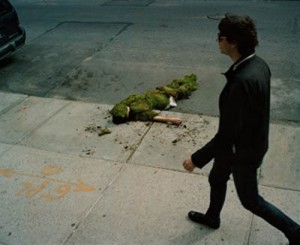« Reviews
The Nature of Things
Renee Gallery - Miami
April 17 - May 29, 2009
By Arelys Hernández
Photography is undoubtedly one of the most comprehensive and diverse forms of visual media. Its field of action can range from strict, objective recording based on the direction of the lens, to photographs for scientific research, social testimony, family mementos, portraits, snapshots that capture a moment in time and the recording of phenomena that the human eye may not be able to see. A kind of artistic photograph and photographic aesthetic exists that no longer solely relies on the codes and concepts of traditional painting and plastic arts, but rather possesses its own means of expression and thought process. There is a complex photographic art that goes beyond two-dimensional work, which has developed in step with many other artistic genres, projecting itself through disciplines with practically inexhaustible variations.
The exhibition entitled “The Nature of Things,” by Claude Butcher and Antonia Wright, which was shown at the Renee Gallery from April 17 through May 29, constituted a significant example of the imaginative and poetic possibilities of photography. Present in this creative duo - professor and student - were two distinct but equally valid methods of working with photographic resources and criteria. Butcher displayed his singular landscape visions, full of rarefied atmospheres and a very intense sense of form; Antonia, on the other hand, offered us almost performative renditions of her environments, which she produced displaying her own body covered with earth, flowers and vegetation, like a symbolic planting that returned her to “Mother Nature.” Each case clearly demonstrated the desire for a subjective communication designed to awaken in the spectator unusual sensations and feelings, ideas related to the ecological spirit, and a useful dialogical inclination with respect to the visual work in question.
Butcher’s classic modernity contrasts with and is complemented by Antonia’s zeal for contemporary exploration. In the former, a certain tradition of photographing the natural environment is implicit. To a certain extent this relates him to Ansel Adams. He identifies with a referent and simultaneously modifies the image through lights, shadows, compositions and textures capable of producing lyrical, dreamlike and fantastic effects. The latter brings us face to face with a reflection of space and body, injecting into everyday life an alien, wild, surprising component, suggestive of birth and death, a return to nature or its transformation (humans included) through decomposition.
Butcher urges us to observe his photos using all of our senses, as if they also contained unconscious sonorities and unknown temporal dimensions. Antonia made the transition from autobiographical document to provocative image, from her mixture of Land Art and Body Art to the discourse about always-remembered origins, from indirect revelations to a kind of “trans-artistic” landscape marked with anthropological evidence.
Thus, in “The Nature of Things” a humanist philosophy and a responsibility for the future of life were also implicit.
Arelys Hernández: BA in Art History. Director and Curator of TeatroAreaStage Gallery in Miami.
Filed Under: Reviews



































